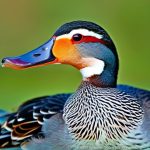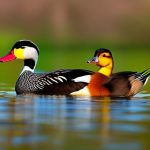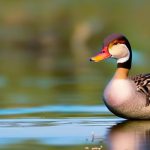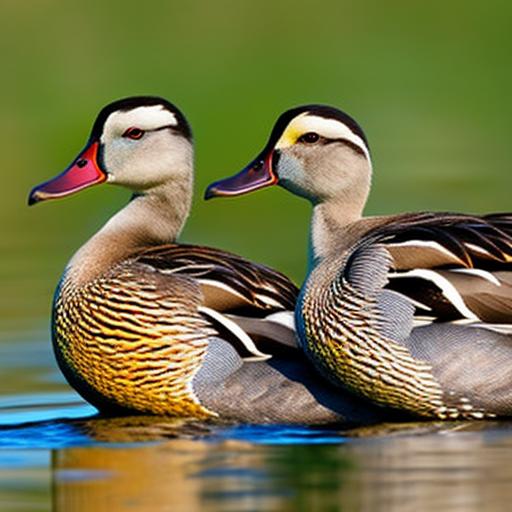Grey duck breeds are a diverse group of waterfowl that are known for their distinctive grey plumage and unique characteristics. These ducks are popular among breeders and enthusiasts for their beauty, adaptability, and friendly disposition. Grey duck breeds can be found in various parts of the world and are valued for their ability to thrive in different environments. They are also known for their excellent foraging abilities and are often kept for their meat, eggs, and as pets.
Grey duck breeds come in a variety of sizes, shapes, and colors, but they all share the common trait of having grey feathers. These ducks are known for their hardiness and adaptability, making them a popular choice for both small-scale and commercial duck farming. Whether you are interested in raising ducks for meat, eggs, or as pets, grey duck breeds offer a wide range of options to suit your needs. In this article, we will explore the characteristics, popular breeds, breeding and raising practices, conservation efforts, health and care tips, as well as associations and resources related to grey duck breeds.
Table of Contents
Key Takeaways
- Grey duck breeds are a popular choice for duck enthusiasts due to their unique characteristics and adaptability to various environments.
- Grey duck breeds are known for their hardiness, good foraging abilities, and calm temperament, making them ideal for both backyard and commercial duck farming.
- Some popular grey duck breeds include the Swedish Blue, Ancona, and Cayuga, each with their own distinct physical and behavioral traits.
- Breeding and raising grey ducks require proper housing, nutrition, and care to ensure the health and well-being of the ducks and successful reproduction.
- Conservation efforts for grey duck breeds are important to maintain genetic diversity and preserve these unique and valuable duck breeds for future generations. Associations and resources are available to support these efforts and provide guidance on breeding and care.
Characteristics of Grey Duck Breeds
Grey duck breeds are known for their distinctive grey plumage, which can range from light silver to dark charcoal in color. They typically have a medium-sized body with a slightly elongated neck and a broad bill. Their legs and feet are often a shade of orange or yellow, adding to their overall striking appearance. Grey ducks are also known for their friendly and sociable nature, making them a popular choice for backyard flocks and small farms.
In addition to their striking appearance, grey duck breeds are also valued for their excellent foraging abilities. They are natural grazers and can thrive on a diet of grass, insects, and aquatic plants. This makes them well-suited for free-range or pasture-based farming systems. Grey ducks are also known for their high egg production, with some breeds laying up to 200 eggs per year. Their eggs are typically large and have a rich flavor, making them a popular choice among egg enthusiasts.
Popular Grey Duck Breeds
There are several popular grey duck breeds that are favored by breeders and enthusiasts around the world. One of the most well-known grey duck breeds is the Swedish Blue duck, which is prized for its striking blue-grey plumage and excellent egg-laying abilities. The Swedish Blue duck is a medium-sized breed with a calm and friendly disposition, making it a popular choice for backyard flocks and small farms.
Another popular grey duck breed is the Ancona duck, which is known for its unique mottled plumage and friendly nature. Ancona ducks come in a variety of colors, including black, blue, chocolate, and silver, making them a visually striking addition to any flock. They are also valued for their high egg production and adaptability to different climates, making them a popular choice for both small-scale and commercial duck farming.
The Cayuga duck is another popular grey duck breed that is prized for its iridescent greenish-black plumage and excellent meat quality. Cayuga ducks are known for their calm and docile nature, making them a popular choice for backyard flocks and small farms. They are also valued for their high egg production and adaptability to different environments, making them a versatile choice for duck enthusiasts.
Breeding and Raising Grey Ducks
Breeding and raising grey ducks can be a rewarding experience for both small-scale farmers and commercial breeders. When it comes to breeding grey ducks, it is important to select healthy breeding stock with desirable traits such as good egg production, friendly disposition, and adaptability to local climate conditions. It is also important to provide proper housing, nutrition, and healthcare to ensure the health and well-being of the breeding stock.
When raising grey ducks, it is important to provide them with access to clean water for swimming and foraging, as well as a balanced diet that includes a mix of grains, greens, and protein sources. Providing adequate shelter from predators and extreme weather conditions is also essential for the well-being of the ducks. Additionally, regular health checks and vaccinations can help prevent common diseases and ensure the overall health of the flock.
Grey Duck Breed Conservation
Conservation efforts for grey duck breeds are important to ensure the preservation of these unique waterfowl species. Many grey duck breeds are at risk of decline due to habitat loss, predation, and competition from non-native species. Conservation efforts often involve breeding programs, habitat restoration, and public education to raise awareness about the importance of preserving these unique duck breeds.
One way to support grey duck breed conservation is by participating in breeding programs that aim to maintain genetic diversity and prevent the loss of valuable traits within the breed. Additionally, supporting organizations that work to protect wetland habitats and promote sustainable farming practices can help create a more favorable environment for grey duck populations to thrive.
Grey Duck Breed Health and Care

Proper health and care practices are essential for maintaining the well-being of grey duck breeds. Regular health checks by a qualified veterinarian can help prevent common diseases and ensure the overall health of the flock. Providing a balanced diet that includes grains, greens, and protein sources is essential for meeting the nutritional needs of grey ducks.
In addition to proper nutrition, providing access to clean water for swimming and foraging is important for the physical and mental well-being of grey ducks. Adequate shelter from predators and extreme weather conditions is also essential for ensuring the safety and comfort of the flock. Regular cleaning of housing facilities and providing proper ventilation can help prevent the spread of diseases and ensure a healthy living environment for the ducks.
Grey Duck Breed Associations and Resources
There are several associations and resources available to support grey duck breeders and enthusiasts. These organizations often provide valuable information on breeding practices, health care tips, and conservation efforts related to grey duck breeds. They also offer networking opportunities for breeders to connect with other enthusiasts and share knowledge and experiences.
One such organization is the American Poultry Association (APA), which provides valuable resources on breeding standards, show guidelines, and conservation efforts related to grey duck breeds. The Livestock Conservancy is another valuable resource that works to protect endangered livestock and poultry breeds, including several grey duck breeds. Additionally, online forums and social media groups provide platforms for breeders and enthusiasts to connect with each other and share information on breeding practices, health care tips, and conservation efforts related to grey duck breeds.
In conclusion, grey duck breeds are valued for their distinctive plumage, excellent foraging abilities, high egg production, adaptability to different environments, and friendly disposition. Popular grey duck breeds include the Swedish Blue duck, Ancona duck, and Cayuga duck. Breeding and raising grey ducks require proper housing, nutrition, healthcare, as well as conservation efforts to ensure the preservation of these unique waterfowl species. Associations such as the American Poultry Association (APA) and the Livestock Conservancy provide valuable resources on breeding standards, health care tips, conservation efforts related to grey duck breeds.
If you’re interested in learning more about grey duck breeds, you might also want to check out this informative article on poultrywizard.com about creating the perfect chicken coop in Grand Island, NE. This article provides valuable insights into creating a comfortable and safe environment for your ducks and other poultry. You can find it here.
FAQs
What are some common grey duck breeds?
Some common grey duck breeds include the Mallard, Gadwall, American Black Duck, and the Mottled Duck.
What are the characteristics of grey duck breeds?
Grey duck breeds typically have a mottled grey or brown plumage, with some variations in color and markings. They also have a relatively long, broad bill and webbed feet for swimming.
Where are grey duck breeds commonly found?
Grey duck breeds are commonly found in wetland areas, such as marshes, ponds, lakes, and rivers. They can be found in various regions around the world, depending on the specific breed.
What do grey duck breeds eat?
Grey duck breeds are omnivorous and typically feed on a diet of aquatic plants, insects, small fish, and other small organisms found in their wetland habitats.
Are grey duck breeds migratory?
Many grey duck breeds are migratory, traveling long distances between their breeding and wintering grounds. However, some breeds may be non-migratory and remain in the same area year-round.
Meet Walter, the feathered-friend fanatic of Florida! Nestled in the sunshine state, Walter struts through life with his feathered companions, clucking his way to happiness. With a coop that’s fancier than a five-star hotel, he’s the Don Juan of the chicken world. When he’s not teaching his hens to do the cha-cha, you’ll find him in a heated debate with his prized rooster, Sir Clucks-a-Lot. Walter’s poultry passion is no yolk; he’s the sunny-side-up guy you never knew you needed in your flock of friends!







